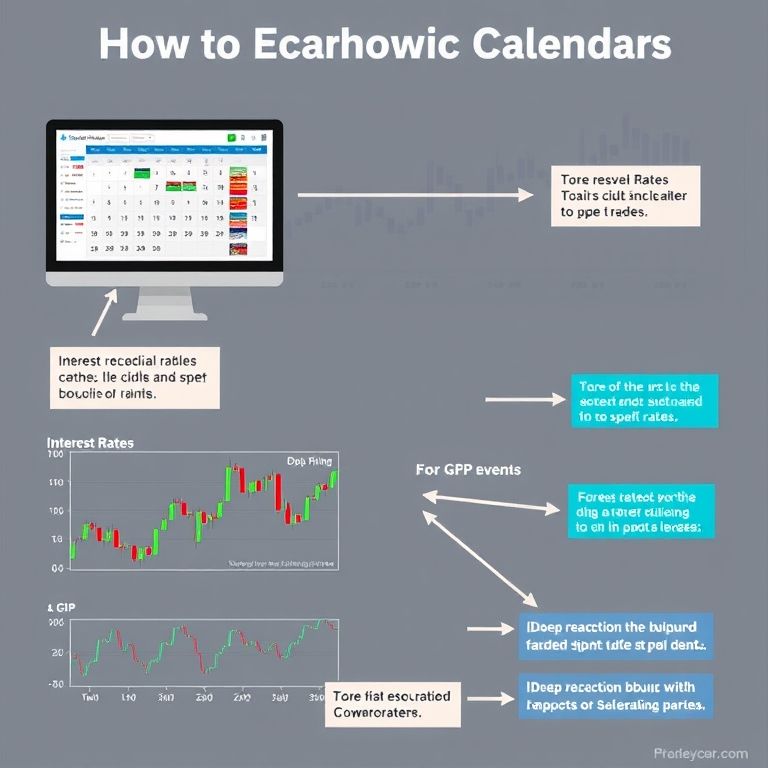How to use a forex economic calendar for trading
How to use a forex economic calendar for trading
Introduction
If you trade currencies, you’re basically trading the mood of the market—and that mood is shaped by data releases. An economic calendar is your weather report: it flags the moments when volatility could spike, giving you a heads-up to rethink risk, tighten stops, or adjust position sizes. The trick is turning calendar data into actionable ideas without getting swept away by hype or rumor.

What the calendar does and how to read it
- Core elements to watch: each entry should show the event, time, forecast, prior numbers, and actual release. The forecast gives you a sense of whether a surprise is likely, while the prior shows the baseline trend. The market reaction depends on whether the outcome beats or misses expectations, and on the asset’s sensitivity to the release.
- Impact signal: many calendars tag events as high, medium, or low impact. Treat high-impact events as potential catalysts for quick moves, not certainty. Plan scenarios rather than bets.
- Example in practice: CPI for a major currency, say the U.S. dollar. If consensus is +0.3% and actual prints +0.5% with a stronger-than-expected core figure, risk-on dollars or higher yields can trigger a sustained move. If the number misses, look for volatility that may reverse quickly as traders recalibrate.
Turning data into trading moves
- Context matters: during calm periods, a surprise may yield a quick spike and reversal; in a trend, the same surprise can extend the move. Align calendar events with price action rather than fighting it.
- Practical steps: set pre-release risk controls (lower position size, wider stops) and have post-release plans (wait for the first price reaction, then confirm with price action and liquidity). Use simple metrics like immediate high/low penetrations and retracements to structure entries.
- Reliability and timing: avoid overreacting to a single release. Cross-check with related data (manufacturing, services, wage data) and examine how similar past releases behaved in similar market regimes.
Advantages of a multi-asset lens
- Forex, stocks, crypto, indices, options, commodities all react differently to the same calendar signal. A macro surprise might lift risk assets, while a risk-off spike could push precious metals and USD-denominated assets higher as a safe haven. Building a framework that looks at correlations helps you pick which markets to trade and how to hedge.
- Strategy idea: use currency signals to time cross-asset hedges. If a dollar rally is likely, alternative hedges in commodities or crypto may show distinct patterns, offering opportunities for spread trades or one-sided plays with limited risk.
DeFi, AI, and the future of prop trading
- DeFi snapshot: decentralized finance is expanding beyond simple swaps into liquidity provisioning and tokenized assets, but it brings liquidity fragmentation, reliance on oracles, and front-running concerns. The calendar remains relevant, but you’ll also track real-time on-chain signals and oracle reliability.
- Smart contracts and AI: expect tighter integration between forecast models, automated order execution, and risk controls. AI can help filter events, quantify sentiment shifts, and simulate how a calendar surprise plays across assets. Smart contracts could execute predefined responses (e.g., scaling out on entry, hedging via options) the moment a release hits.
- Prop trading prospects: capital access and speed are the edge. Juggling the calendar with disciplined risk budgets, tight win rates, and transparent journaling helps prop desks scale. A well-built calendar framework fuels faster decision-making and keeps alpha grounded in data.
Promotional flavor and takeaways
- Slogan ideas to keep in mind: “Trade with the clock, turn calendar signals into profits.” “Read the release, ride the move.” “From calendar cue to disciplined execution.” These aren’t utopias, just reminders that data-informed decisions beat gut feeling every time.
- Reliability and strategy notes: backtest your calendar rules across different regimes, keep a simple rule set, and stay flexible. The calendar is a guide, not a guarantee. Build routines around data checks, not frenzy.
What’s next and why it matters
The forex calendar remains a steady anchor in a shifting landscape—especially as crypto, AI-driven tools, and smart contracts reshape how trades are sourced and executed. For prop traders and solo traders alike, the real edge comes from combining clean calendar inputs with clear risk controls, multi-asset thinking, and a willingness to adapt as DeFi and smart contracts mature.
If you’re shaping a trading plan around “How to use a forex economic calendar for trading,” remember: calendars illuminate the probable, not the guaranteed. Pair them with measured risk, cross-asset awareness, and a touch of innovation, and you’ve got a practical path through the noise.